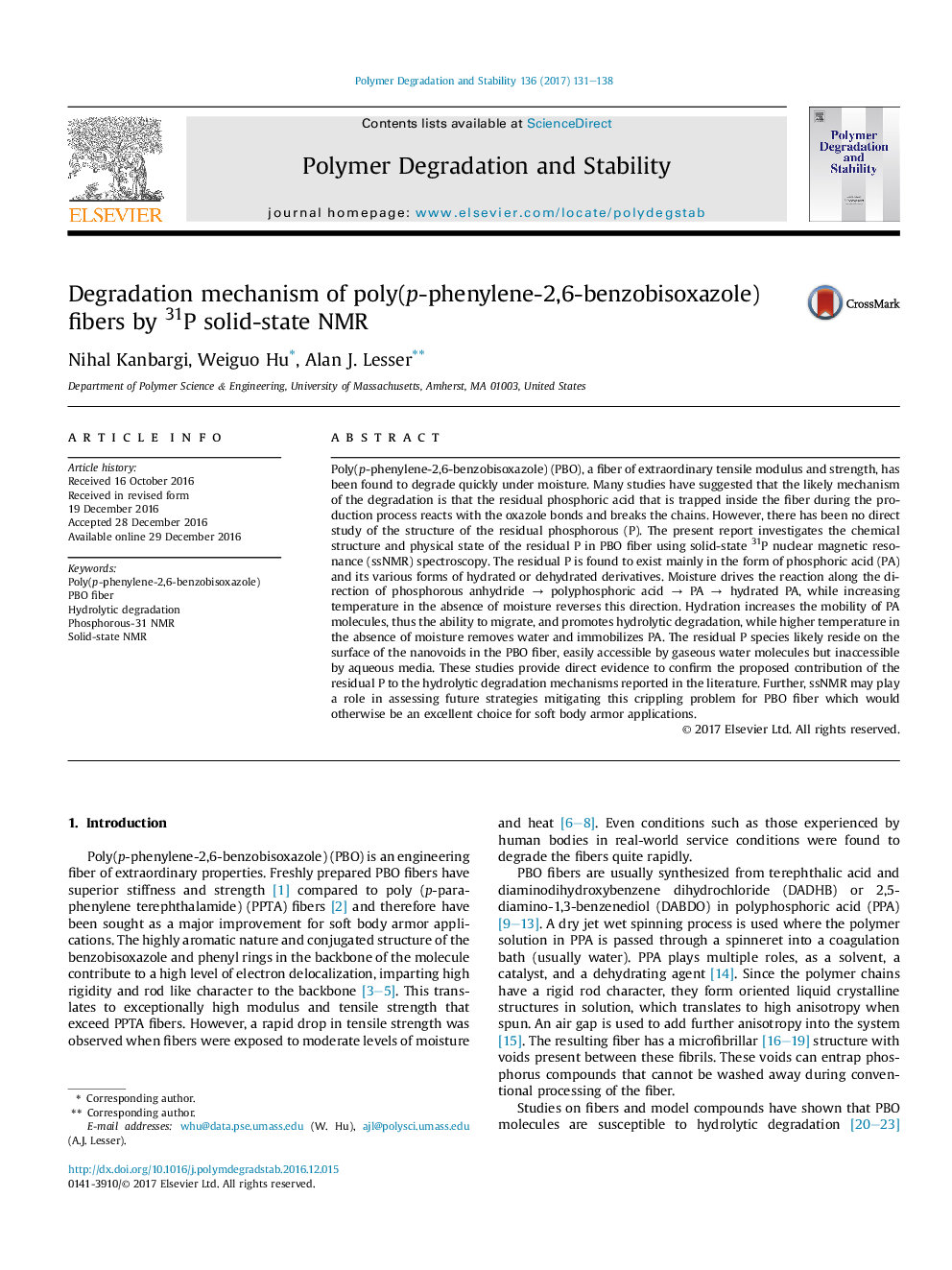| کد مقاله | کد نشریه | سال انتشار | مقاله انگلیسی | نسخه تمام متن |
|---|---|---|---|---|
| 5200936 | 1502877 | 2017 | 8 صفحه PDF | دانلود رایگان |
عنوان انگلیسی مقاله ISI
Degradation mechanism of poly(p-phenylene-2,6-benzobisoxazole) fibers by 31P solid-state NMR
دانلود مقاله + سفارش ترجمه
دانلود مقاله ISI انگلیسی
رایگان برای ایرانیان
کلمات کلیدی
موضوعات مرتبط
مهندسی و علوم پایه
شیمی
شیمی آلی
پیش نمایش صفحه اول مقاله

چکیده انگلیسی
Poly(p-phenylene-2,6-benzobisoxazole) (PBO), a fiber of extraordinary tensile modulus and strength, has been found to degrade quickly under moisture. Many studies have suggested that the likely mechanism of the degradation is that the residual phosphoric acid that is trapped inside the fiber during the production process reacts with the oxazole bonds and breaks the chains. However, there has been no direct study of the structure of the residual phosphorous (P). The present report investigates the chemical structure and physical state of the residual P in PBO fiber using solid-state 31P nuclear magnetic resonance (ssNMR) spectroscopy. The residual P is found to exist mainly in the form of phosphoric acid (PA) and its various forms of hydrated or dehydrated derivatives. Moisture drives the reaction along the direction of phosphorous anhydride â polyphosphoric acid â PA â hydrated PA, while increasing temperature in the absence of moisture reverses this direction. Hydration increases the mobility of PA molecules, thus the ability to migrate, and promotes hydrolytic degradation, while higher temperature in the absence of moisture removes water and immobilizes PA. The residual P species likely reside on the surface of the nanovoids in the PBO fiber, easily accessible by gaseous water molecules but inaccessible by aqueous media. These studies provide direct evidence to confirm the proposed contribution of the residual P to the hydrolytic degradation mechanisms reported in the literature. Further, ssNMR may play a role in assessing future strategies mitigating this crippling problem for PBO fiber which would otherwise be an excellent choice for soft body armor applications.
ناشر
Database: Elsevier - ScienceDirect (ساینس دایرکت)
Journal: Polymer Degradation and Stability - Volume 136, February 2017, Pages 131-138
Journal: Polymer Degradation and Stability - Volume 136, February 2017, Pages 131-138
نویسندگان
Nihal Kanbargi, Weiguo Hu, Alan J. Lesser,